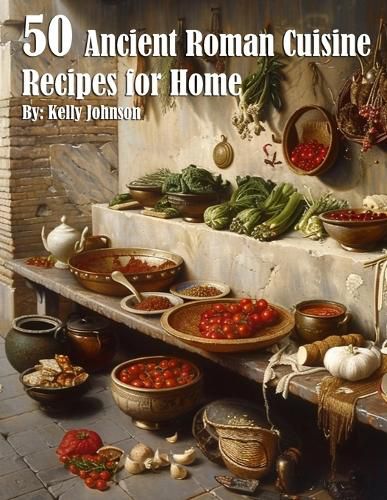Readings Newsletter
Become a Readings Member to make your shopping experience even easier.
Sign in or sign up for free!
You’re not far away from qualifying for FREE standard shipping within Australia
You’ve qualified for FREE standard shipping within Australia
The cart is loading…






This title is printed to order. This book may have been self-published. If so, we cannot guarantee the quality of the content. In the main most books will have gone through the editing process however some may not. We therefore suggest that you be aware of this before ordering this book. If in doubt check either the author or publisher’s details as we are unable to accept any returns unless they are faulty. Please contact us if you have any questions.
Ancient Roman cuisine was diverse and influenced by factors such as geography, trade, and social classes. A cookbook from that era would reflect a rich tapestry of ingredients and cooking techniques. The Romans used a wide variety of meats including pork, poultry, wild game, and fish. They also incorporated vegetables like cabbage, lettuce, carrots, and onions, along with legumes such as lentils and chickpeas. Fruits like figs, grapes, and apples were commonly eaten, both fresh and dried. Roman cuisine was known for its lavish use of spices and herbs, including black pepper, cumin, coriander, and mint.
One of the key aspects of ancient Roman cooking was the use of sauces and condiments to enhance flavors. Garum, a fermented fish sauce, was a staple in many dishes and was used similarly to how we use salt today. Another famous sauce was called liquamen, which was similar to garum but made with a different process. The Romans were skilled at combining sweet, sour, salty, and savory flavors in their dishes. They also enjoyed baking bread, which was a dietary staple for all classes. A cookbook from ancient Rome would likely contain recipes that showcase the blending of these diverse ingredients and cooking methods, offering a glimpse into the culinary traditions of a fascinating civilization.
$9.00 standard shipping within Australia
FREE standard shipping within Australia for orders over $100.00
Express & International shipping calculated at checkout
This title is printed to order. This book may have been self-published. If so, we cannot guarantee the quality of the content. In the main most books will have gone through the editing process however some may not. We therefore suggest that you be aware of this before ordering this book. If in doubt check either the author or publisher’s details as we are unable to accept any returns unless they are faulty. Please contact us if you have any questions.
Ancient Roman cuisine was diverse and influenced by factors such as geography, trade, and social classes. A cookbook from that era would reflect a rich tapestry of ingredients and cooking techniques. The Romans used a wide variety of meats including pork, poultry, wild game, and fish. They also incorporated vegetables like cabbage, lettuce, carrots, and onions, along with legumes such as lentils and chickpeas. Fruits like figs, grapes, and apples were commonly eaten, both fresh and dried. Roman cuisine was known for its lavish use of spices and herbs, including black pepper, cumin, coriander, and mint.
One of the key aspects of ancient Roman cooking was the use of sauces and condiments to enhance flavors. Garum, a fermented fish sauce, was a staple in many dishes and was used similarly to how we use salt today. Another famous sauce was called liquamen, which was similar to garum but made with a different process. The Romans were skilled at combining sweet, sour, salty, and savory flavors in their dishes. They also enjoyed baking bread, which was a dietary staple for all classes. A cookbook from ancient Rome would likely contain recipes that showcase the blending of these diverse ingredients and cooking methods, offering a glimpse into the culinary traditions of a fascinating civilization.